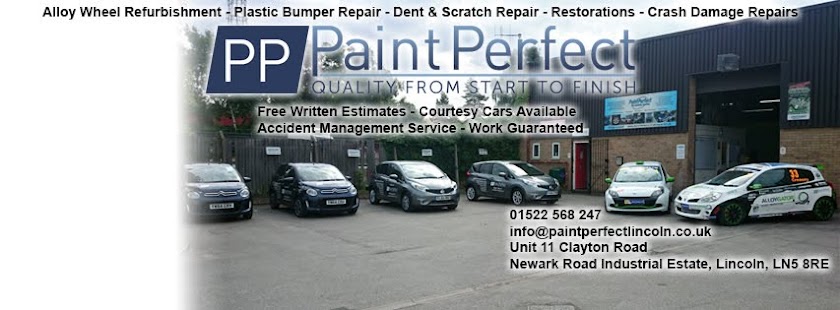Tyres are an important but often overlooked safety item on your car and neglecting them can leave you counting the cost.
A worn tyre is not only an MOT failure but it is also a traffic offence punishable by a fixed penalty notice issued on the spot or referred to a court with a possibly penalty of three points on your licence and a £2500 fine.
Tyres worn below the legal limit also prevent insurance claims from being paid out leaving the driver effectively uninsured & liable for all costs incurred as a result of the accident. When we have VDAs visiting our Lincoln body shop to assess vehicle damage the tyre tread depths are usually the first point of the inspection.
As well as the legal and insurance implications worn tyres can lead to accidents and injury.
Here are some tyre deflects to check for:
Uneven Wear On One Side
This is caused by a camber or tracking issue and can often be hidden on the inside shoulder of the car. It's easy to check on the front by turning the steering wheel to full lock but often overlooked on the back. After replacing the tyres the car needs a four wheel alignment to rectify the problem. This is a service we offer at our Clayton Road workshop for £70.
Wear In the Middle Of The Tread
This is caused by over inflation. Your car will have a manufacturer's recommended inflation pressure in the hand book and on a sticker or plate on the vehicle. These are usually located behind the fuel filler flap or in the front door shuts. When checking and setting pressures remember to check what units the pressures are given in and what your tyre gauge shows.
Wear On Both Corners Of The Tread
This is caused by under inflation. Running a tyre under inflated is extremely dangerous and causes the sidewall to rub together as can be seen below.
This weakening of the sidewalls can lead to a blowout which can be fatal at high speed. A blowout is a rapid failure of a sidewall which can cause the tyre to become detached from the rim as can be seen in this photo.
What needs to be addressed is the reason for the wheel losing pressure. It may have a slow puncture or it may be a problem with the wheel itself. Alloy wheels corrode where the tyre bead meets the wheel and the rough surface causes the tyre to leak pressure. At Paint Perfect we can cure this problem for as little as £60 and as quickly as one working day. Cracks in alloy wheels are also another cause of tyre deflation. We can TIG weld alloy wheels for as little as £70. Under inflation of tyres also increases rolling resistance and makes your vehicle less fuel efficient.
Blebs
These are egg shaped lumps that appear in the tyre side wall and are usually an indication of impact damage usually with a pothole or a kerb. These weaken the sidewall and increase the risk of a blow out.
If a wheel has taken an impact that causes a bleb there is usually a vibration that can be felt from the wheel. Sometimes it can only be felt at certain speeds, if it is a front wheel it can be felt as a shake through the steering wheel. This is a clear indication of a buckled alloy wheel. At Paint Perfect we can straighten buckled alloy wheels for as little as £70.
In extreme cases you may notice the steering wheel no longer is level when driving in a straight line which suggests the steering has been affected. As mentioned above we offer wheel tracking which can cure this problem.
Sidewall Damage
At Paint Perfect we are alloy wheel repair specialists and offer a full range of services including chemical stripping and media blasting to durable paint and powder coat finishes.
We can weld cracked wheels and straighten buckles as well as souring, supplying and fitting tyres at competitive prices.
We are located on Newark Road Industrial Estate just to the south of Lincoln High Street. Call in to our Clayton Road workshop for free estimates and advice, ring us on 01522 568247 or e-mail info@paintperfectlincoln.co.uk










.jpg)








